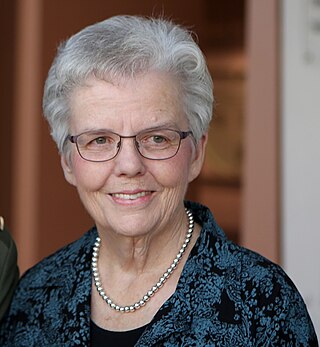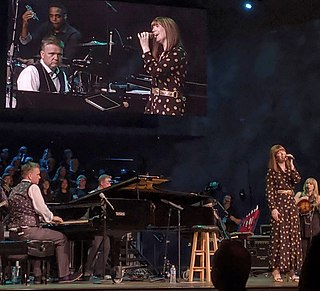A doxology is a short hymn of praises to God in various forms of Christian worship, often added to the end of canticles, psalms, and hymns. The tradition derives from a similar practice in the Jewish synagogue, where some version of the Kaddish serves to terminate each section of the service.

The phrase "What would Jesus do?", often abbreviated to WWJD, became particularly popular in the United States in the early 1900s, following the 1896 novel In His Steps: What Would Jesus Do? by Charles Sheldon. The phrase saw a resurgence in the 1990s as a personal motto for Christians, who used it as a reminder of their belief in the moral imperative in a way that demonstrated the love of Jesus through their actions. The resurgence of the motto in the 1990s stemmed from the WWJD abbreviation on wristbands that became popular among Christian youth groups.

The "Battle Hymn of the Republic" is an American patriotic song written by the abolitionist writer Julia Ward Howe during the American Civil War.

Frances Jane van Alstyne, more commonly known as Fanny J. Crosby, was an American mission worker, poet, lyricist, and composer. She was a prolific hymnist, writing more than 8,000 hymns and gospel songs, with more than 100 million copies printed. She is also known for her teaching and her rescue mission work. By the end of the 19th century, she was a household name.
"Lord of the Dance" is a hymn written by English songwriter Sydney Carter in 1963. The melody is from the American Shaker song "Simple Gifts" composed in 1848. The hymn is widely performed in English-speaking congregations and assemblies.

George Beverly Shea was a Canadian-born American gospel singer and hymn composer. Shea was often described as "America's beloved gospel singer" and was considered "the first international singing 'star' of the gospel world," as a consequence of his solos at Billy Graham Crusades and his exposure on radio, records and television. Because of the large attendance at Graham's Crusades, it is estimated that Shea sang live before more people than anyone else in history.

Janice Kapp Perry is an American composer, songwriter, and author. As a member of the Church of Jesus Christ of Latter-day Saints, she has written over 3,000 songs, some of which appeared in the church's official hymnal, and in the Children's Songbook. Some of her most well-known songs include "I Love to See the Temple" and "A Child's Prayer."
The Divine Service is a title given to the Eucharistic liturgy as used in the various Lutheran churches. It has its roots in the Pre-Tridentine Mass as revised by Martin Luther in his Formula missae of 1523 and his Deutsche Messe of 1526. It was further developed through the Kirchenordnungen of the sixteenth and seventeenth centuries that followed in Luther's tradition.
Hymns are an important part of the history and worship of the Church of Jesus Christ of Latter-day Saints.

Hymns of the Church of Jesus Christ of Latter-day Saints is the official hymnal of the Church of Jesus Christ of Latter-day Saints . Published in English in 1985, and later in many other languages, it is used throughout the LDS Church. This article refers to the English version. The book was published on the 150th anniversary of the publication of the first LDS hymnbook, compiled by Emma Smith in 1835. Previous hymnbooks used by the church include The Manchester Hymnal (1840), The Psalmody (1889), Songs of Zion (1908), Hymns (1927), and Hymns (1948).

Charlotte Elliott was an English evangelical Anglican poet, hymn writer, and editor. She is best known by two hymns, "Just As I Am" and "Thy will be done".
Charles Hutchinson Gabriel was an American composer and lyricist of gospel songs and gospel tunes. He is said to have written and/or composed between 7,000 and 8,000 songs, many of which are available in 21st century hymnals. He used several pseudonyms, including Charlotte G. Homer, H. A. Henry, and S. B. Jackson.

"The Lily of the Valley" is a Christian hymn written by William Charles Fry (1837–1882) in London for the Salvation Army. Ira D. Sankey arranged the words to the music of "The Little Old Log Cabin In The Lane" composed by Will Hays.
"Softly and Tenderly" is a Christian hymn. It was composed and written by Will L. Thompson in 1880. It is based on the Bible verse Mark 10:49.
Jann Aldredge-Clanton was an ordained Christian minister, author, teacher, and chaplain, who led workshops and conferences throughout the United States. She authored eleven books, six songbooks, a children's musical, and a children's songbook. She also published many articles in publications such as Christian Feminism Today, The Journal of Pastoral Care, The Christian Ministry, and Patheos. She specialized in feminist theology and inclusive worship resources.
Hymnody in continental Europe developed from early liturgical music, especially Gregorian chant. Music became more complicated as embellishments and variations were added, along with influences from secular music. Although vernacular leisen and vernacular or mixed-language carols were sung in the Middle Ages, more vernacular hymnody emerged during the Protestant Reformation, although ecclesiastical Latin continued to be used after the Reformation. Since then, developments have shifted between isorhythmic, homorhythmic, and more rounded musical forms with some lilting. Theological underpinnings influenced the narrative point of view used, with Pietism especially encouraging the use of the first person singular. In the last several centuries, many songs from Evangelicalism have been translated from English into German.

Keith & Kristyn Getty are a musical duo from Northern Ireland, focusing on hymns and other Christian music. They are best known for the 2001 hymn "In Christ Alone", co-written with Stuart Townend.
Elvina Mable Hall was an American songwriter who wrote the lyrics to the well-known hymn, which is now known as "Jesus Paid It All," also known as "I hear the Saviour say".

Lydia Baxter was an American poet and hymnwriter. She is chiefly remembered as the author of "The Gate Ajar for Me" and other Sunday school hymns, which became widely known and very popular. This song in particular, and some events associated with it, influenced Ira D. Sankey, American gospel singer and composer, to write his first hymn.










